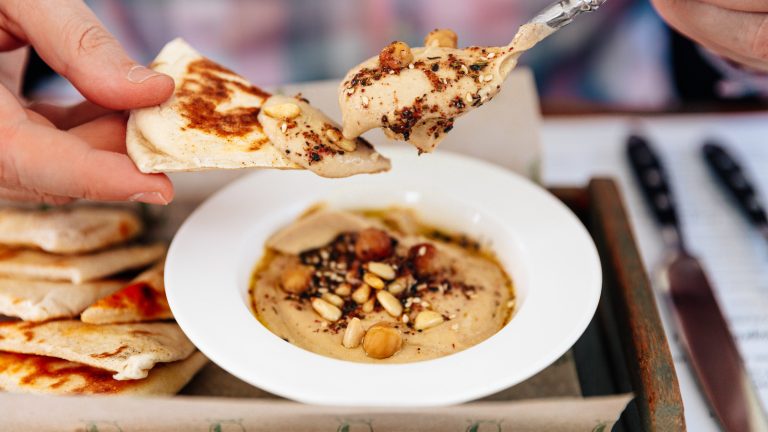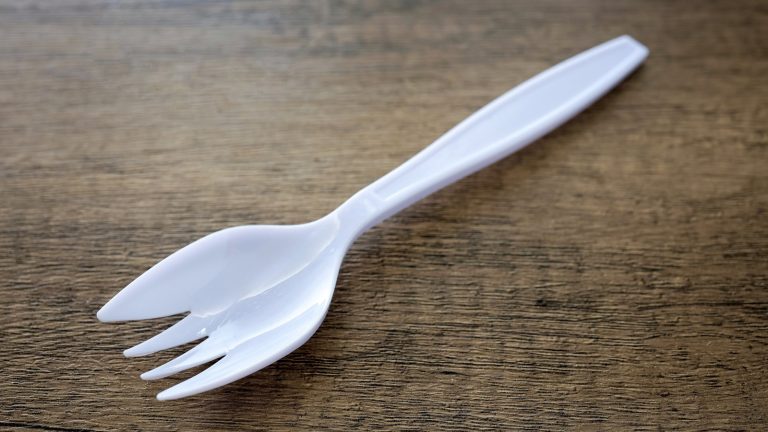We may receive a commission on purchases made from links.
Beer gardens, unlike bars, are bright spaces during the day that transform into magical settings at night where friends can chat, drink, eat, dance, and sing. They serve far more purposes than just getting guests drunk; in fact, traditional Bavarian beer gardens are family-friendly spaces, at least during the day. Whether you are looking for a meaningful way to introduce separate friend groups to one another, or you are celebrating a graduation, a backyard beer garden can bring folks together in a convivial, thoughtful, and lighthearted manner. Beer gardens can be permanent, as is the case with Munich’s highly acclaimed Königlicher Hirschgarten, or they can be temporary, as is the case with many beer gardens set up in honor of holidays and festivals. Odds are, yours will also be temporary, unless you love it so much that you go into the beer garden business!
Beer gardens have a distinct vibe that contributes to their sense of “gemütlichkeit,” a German word that roughly translates to a feeling of friendliness, coziness, and belonging. From the tree branches that sway overhead to the smell of bratwurst cooking on the grill, you won’t have any choice but to relax and let go of your everyday worries. We put together this guide to help you curate the best possible backyard beer garden, covering topics like which beer glasses you should buy and what music you should play in the background. Carissa Knapp, creative director of the Los Angeles-based beer garden Common Space, has provided expert insight along the way.
Honor beer gardens’ cultural roots
Providing some cultural context to beer gardens is crucial if you want to respect, honor, and do justice to their festive traditions. To help educate your guests about German and Austrian culture, consider playing a fun game of trivia. Questions can cover a wide range of topics, such as why steins have lids (to keep bugs and dirt out) and the difference between a beer garden and a beer hall (the former is outside, while the latter is inside). Here, you can also delve more deeply into how beer gardens have evolved over the years. For example, you can teach guests that beer gardens have been popular in Germany for over 200 years, with the first American beer garden opening in Austin, Texas, in 1866.
Another way to help guests think more critically about beer gardens is to leave small, interesting facts around the space for guests to read. For instance, you might provide notecards with brief descriptions of the significance of each dish at the serving table. Don’t neglect the power of using proper vocabulary when paying homage to another culture, either; namely, you should label dishes with both their German and English names.
At the same time, you don’t want to get too caught up in the details. A beer garden is meant to be a place where you can relax and unwind with friends. While it is crucial that you respect other cultures and refrain from irresponsibly appropriating their traditions, Germans and Austrians are typically more than happy to see Americans appreciating their customs.
Consider the season or occasion
Even if you just want to celebrate a gorgeous summer’s day, there are ways to tailor your backyard beer garden for that purpose. Indeed, Carissa Knapp explained that “St. Patrick’s Day, Cinco de Mayo, and Oktoberfest are all classic beer-loving holidays — but some of our favorite moments come with those first sunny days of spring.” You can honor the different seasons by adorning your tables with specific plants; for example, poinsettias during the winter and tulips during the spring. If the weather will be cold, space heaters are a good idea to keep guests comfortable. On the other hand, if you are celebrating a holiday, enhance the space with a few related decorations. Knapp noted that “Pendant flags are simple to hang along your string lights and easy to swap out for different holidays, like St. Patrick’s Day and Oktoberfest.”
Plus, you’ll want to consider matching your beer offerings to the season; a light, crisp beer can be rejuvenating during the dog days of summer, while a full-bodied beer with hints of spice can help one feel cozy during the fall and winter. Knapp shared that springtime is when the bartenders at Common Space “crack open Sonrisa, [a] crisp, crushable Mexican-style lager, and soak up the long great weather season in LA.” Relatedly, you can also incorporate seasonal ingredients into your beer garden menu. For instance, an asparagus salad can turn heads in the spring, while apple fritters are better suited for the late summer and early fall.
Gather your ingredients and stock the coolers
Speaking of food, it’s time to decide on a menu. Your guests are liable to expect large, soft pretzels, so make sure to have plenty on hand. You can serve them plain or with condiments like obatzda (also known as beer cheese). Other types of cheese, like Gruyère and Swiss, will go nicely with rye bread, salami, and ham on a large platter. We recommend roasting plenty of bratwurst and tossing together a batch of sauerkraut with which to pair it; here, you can get creative by exploring regional variations of bratwurst. Salads, especially potato salads and cucumber salads, are likewise essential, as they add an element of freshness to an otherwise carbohydrate and meat-heavy spread. A wide variety of German egg dishes, including egg salad, are often enjoyed at lunch or dinner as well.
Next up: Drinks. If you’re going through all the effort of recreating a beer garden in your own backyard, you might as well spring for the fancier brews. Select German and Austrian beers for a more immersive experience, and have a jug of lemonade on hand for mixing radlers. Make non-alcoholic options available as well; for inspiration, check out our ranking of non-alcoholic craft and macro beers, which happily includes one German option.
When it comes to serving food and beverages, you have a choice. For instance, you can present guests with individually plated meals at their tables or bring platters of food to each table for sharing. The easiest option, though, is to keep dishes stocked at a buffet station where guests can serve themselves.
Set the mood
Carissa Knapp told us that “creating that perfect beer garden vibe is all about keeping things relaxed, communal, and a little magical.” What better way to add whimsy to your setup than by hanging several strands of fairy lights overhead? Knapp confirmed that string lights are a must because they “add a warm, inviting glow once the sun goes down.” Plus, soft lights are proven to be more conducive to leisurely meals. We recommend a battery-operated product like these Albelt waterproof twinkle lights; with 33 feet per string of tiny, twinkling bulbs lighting up your space, you can dine, dance, and discuss life’s great mysteries until the wee hours of the morning.
Beer gardens are typically enveloped in nature, so recreating one in your own backyard can be a breeze; if you have trees and/or shrubs, they are already doing half the work for you! Knapp specifically recommended adding “lush potted greenery or thriving ferns to bring the space to life.” Position your plants strategically. For instance, you can employ the fronds of a fern to hide an unsightly speaker and/or arrange several plants into a loose barrier that demarcates the dance floor.
Large plants are best left on the ground, so Knapp emphasized that one can instead “add some fresh greenery or simple centerpieces” to each table for a pleasing aesthetic. Tiny bud vases featuring sprigs of rosemary, woven baskets brimming with pine cones, and scatterings of fresh fruits like pears and apples make decorating tables a breeze. Knapp also noted that “easygoing plants and low-maintenance succulents add a natural touch without the fuss.”
Cue the music
Although German and Austrian music do not often top the charts on a global scale, when trumpets, trombones, clarinets, tubas, and accordions come together in a beer garden, the tunes they create are nostalgic, joyful, complex, and playful all at once. Traditional beer garden music has thus achieved international fame, and many people can immediately recognize the opening notes of an oompah song. When planning a backyard beer garden, you should find or curate a playlist with some of the most popular German folk songs and drinking songs. You should also invest in a set of high-quality speakers to do justice to the many instruments that contribute to each tune.
While it may be that none of your guests speak German, leading them in singing the words to the more popular songs, such as “Ein Prosit der Gemütlichkeit,” can result in a raucously good time. Printing off the lyrics in advance can help guests sing more confidently. Some easily recognizable songs, like Nena’s “99 Luftballons,” might have guests singing at the tops of their lungs.
Finally, you can always play modern, global music that will help guests feel at ease. Tunes like John Denver’s “Country Roads,” Neil Diamond’s “Sweet Caroline,” and Mountain Mother’s “Sierra Madre,” for instance, play frequently during festivals. Carissa Knapp directed us to a more laid-back Spotify playlist curated for Common Space, noting that “It’s filled with vibey tunes perfect for poolside relaxation, light twirls with your eyes closed, and solo dancing with a beer in hand.”
Procure large, sturdy tables
Carissa Knapp recommended setting up long tables that can be conducive to communal dining. Don’t worry about seating arrangements or whether guests who are strangers to one another will sit in awkward silence. After all, this is a beer garden we are talking about, and you never know which of your friends are going to hit it off over a stein or two of good German brew.
No matter what, make sure these tables are sturdy enough to handle several plates of food, glasses of beer, and a crowd of potentially tipsy guests. Remember: If your party is really bumping, then the tables might be bumping, too. Plus, if you have ever been to an Oktoberfest celebration, then you might already know that dancing on the tabletops is one of the most enjoyable parts of the evening.
With all this in mind, picnic tables are usually the ideal addition to your backyard beer garden, and they offer the added benefit of not requiring you to source extra chairs or benches. However, if you expect a calmer atmosphere, folding tables would also be acceptable. In the event of the latter, you might source benches so that guests feel a bit more cozy with one another. This is not entirely necessary, though; Knapp told us that Austrian beer gardens “can be a bit more elegant, with some having a more café-like setting with smaller tables.”
Set the tables
No matter which dishes you end up offering guests, you’ll need to make sure you have the correct tableware for eating them. One of the first steps is to adorn your tables with either traditional checked tablecloths, such as the ones found in this three-piece Oktoberfest set from Oojami, or more elegant tablecloths, perhaps embroidered with floral motifs. Napkins can similarly be casual and made of paper, or elegant and made of cloth. Carissa Knapp told us that as far as spoons, forks, and knives go, a simple set of silver utensils will do the trick. Plates and soup bowls might be in order, and small ramekins can provide a fancier way of serving mustard and obatzda (German beer cheese). Knapp recommended serving food on ceramic platters large enough to accommodate shareable dishes (like pretzels and bratwurst).
As for distributing beer, not every glass suits the same beer. Knapp suggested starting with 16-ounce pint glasses, which she describes as “a versatile choice that works well for most beer styles.” From there, you might invest in a set of tulip glasses, which are well-suited for IPAs and beers with a higher alcohol content. The reason for this, Knapp shared, is that the tulip shape “helps capture aromas and enhance the drinking experience.” These glasses are commonly used to serve German pilsners, which are noticeably different from American-style beers. If you want to take it a step further, look into nucleated glassware, which is the standard set at Common Space. Knapp explained that etchings on the bottom of the glass help “release aromas, enhance mouthfeel, and add visual appeal. The constant bubbling creates a beautiful effect!”
Fire up the grill
If you need another excuse to stock up on charcoal and dust off the grill, here it is: Many beer garden staples taste better when cooked over hot coals. The complex, smoky, and slightly bitter flavors imparted by a grill on foods like bratwurst and schweinshaxe (pork knuckle) cannot be underestimated. If you don’t have a grill, using a grill pan or griddle is better than nothing. A product like the Lodge LDP3 cast iron griddle helps char food without the need for fire, and it also leaves lovely grill marks that will elevate your dishes’ aesthetic appeal. However, because a true grill capitalizes on radiation from the hot coals, it will cook your dishes far more evenly. Plus, a real grill facilitates flare-ups, in which droplets of fat fall onto the coals and are sent back up in flames. In moderation, such flare-ups enhance the taste of the meat being cooked.
So, what kind of grill is best for cooking German and Austrian cuisine? If you are investing in a new grill, you have many options; pellet, gas, electric, and charcoal grills are some of the more common styles. We suggest using a charcoal grill in your backyard beer garden because it will give your dishes the smokiest flavor. Plus, charcoal grills are ideal for slow-cooked meats, including bratwurst and pork. One of the best charcoal grills on the market is the Weber 22-Inch Original Kettle Premium Charcoal Grill. In between conversations and sips of beer, be sure to monitor the airflow and the quantity of charcoal in your grill so that you can keep serving food all night long.
Break out the games
To spark conversation and laughter, and to keep people entertained for hours on end, Germans and Austrians have come up with quite a few games to play in beer gardens. Naturally, arm wrestling is a no-frills competition that doesn’t require any equipment, and yet it can be a source of much hilarity, especially after a few drinks. Hammerschlagen requires more preparatory work. First, you will need to source a large tree stump or wooden beam, a handful of nails, and a hammer. After each person selects a nail, players will take turns to try to drive their nail flush into the wood using the hammer’s wedge end. The first person to do so wins. Meanwhile, bierschinken is a card-based drinking game that Germans and Austrians love (we recommend that you play this one with caution!).
Feel free to incorporate your favorite games — including ones that challenge your guests physically as well as mentally. If your beer garden will be kid-friendly, make sure that you have activities, such as relay races and drawing competitions, planned for them. Guests who are introverted might find themselves yearning for a quiet game of chess. Carissa Knapp further suggested to us that “games like a deck of cards, giant Jenga, cornhole, or even bocce are perfect for keeping the good times rolling. Covering tables with kraft paper is also a fun touch — great for kids (and adults!) to doodle, draw, and get creative while they hang out.”





